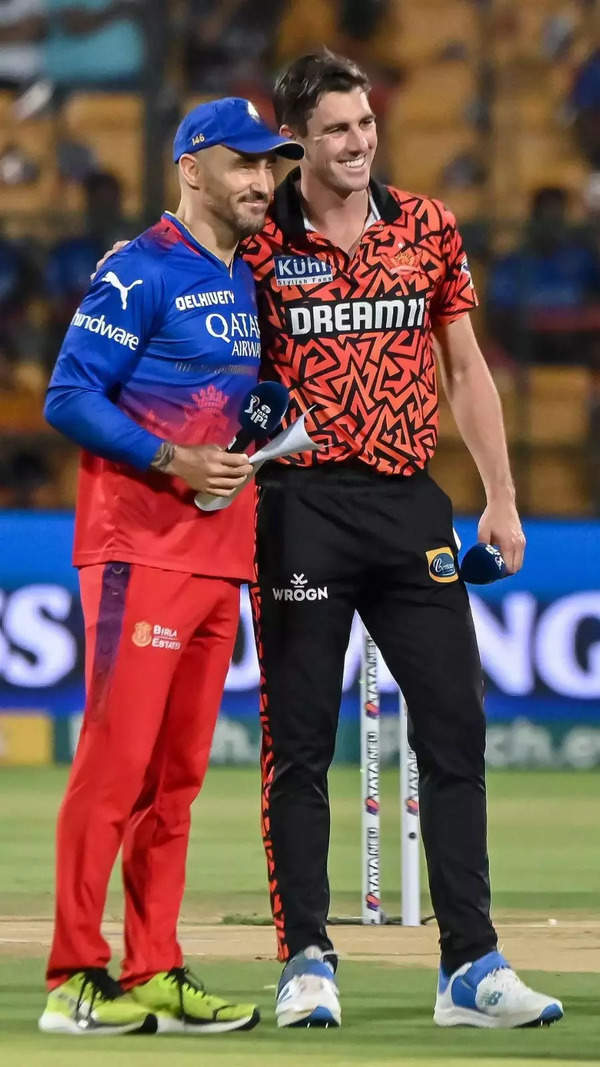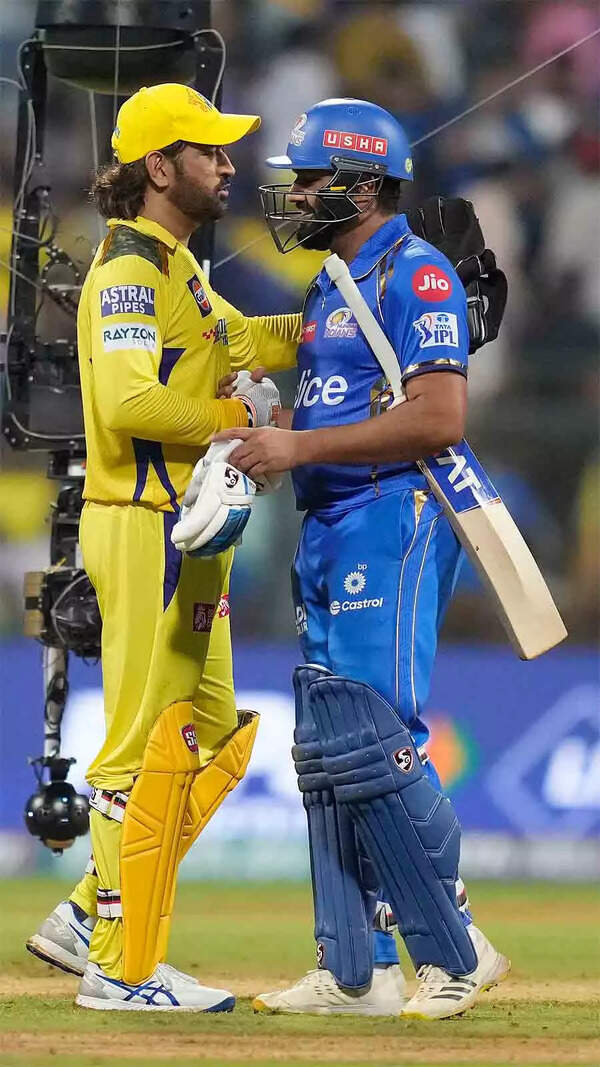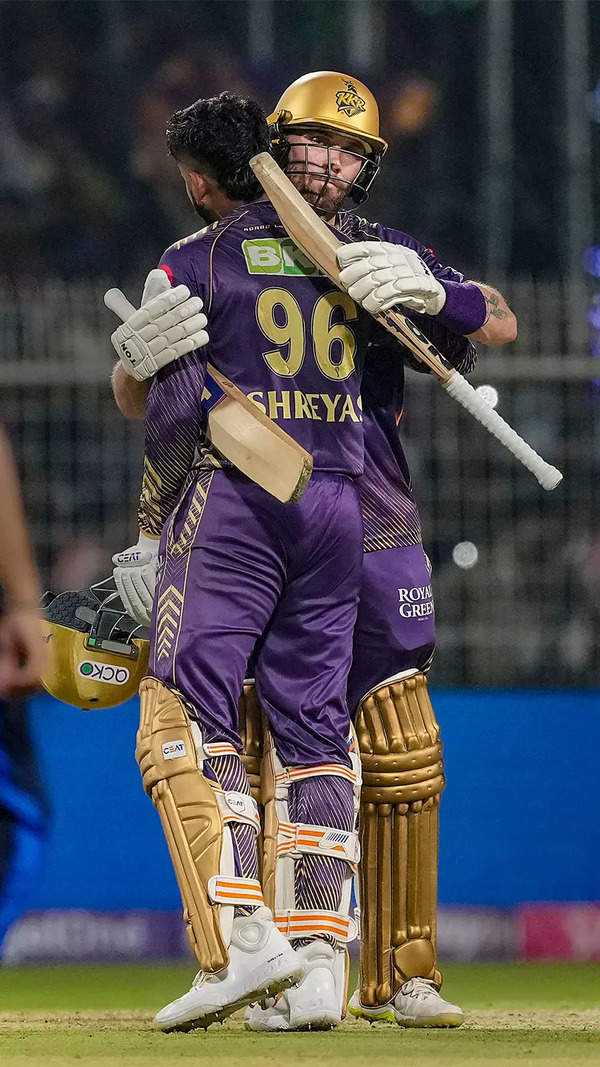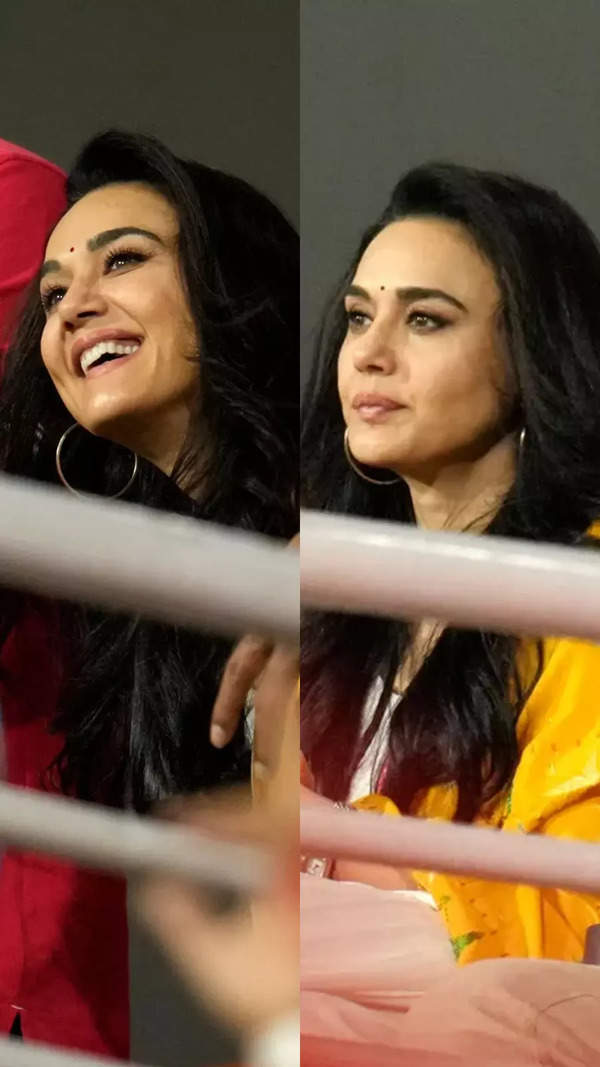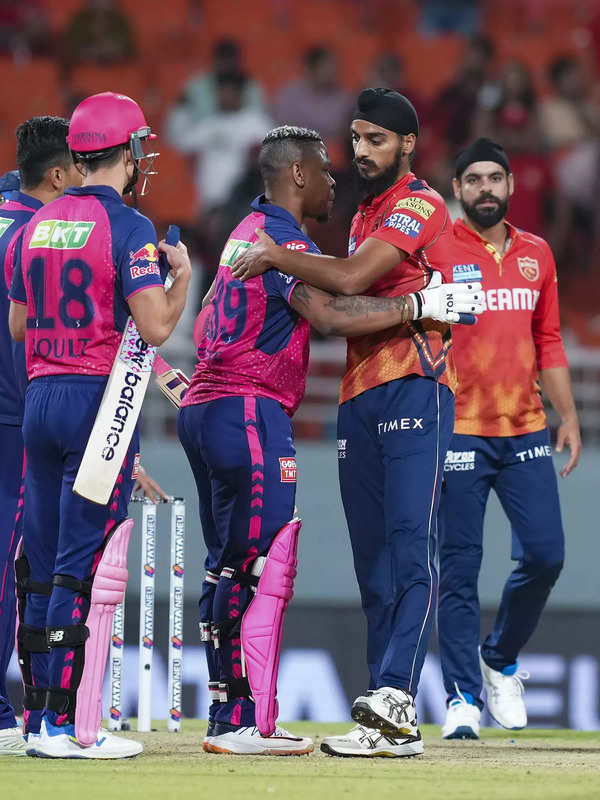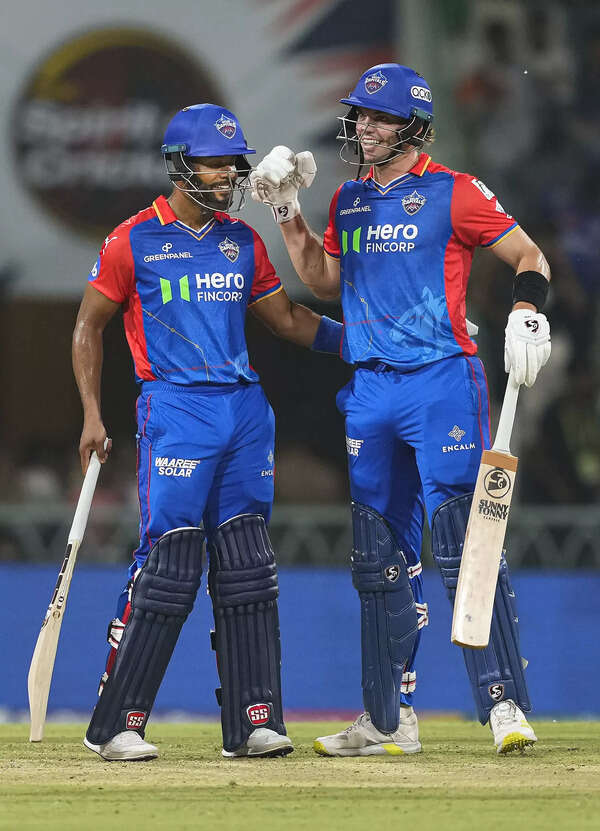- News
- Sports News
- Cricket News
- I wish I had the discipline of Virender Sehwag: Krishnamachari Srikkanth
Trending
This story is from December 31, 2019
I wish I had the discipline of Virender Sehwag: Krishnamachari Srikkanth
Krishnamachari Srikkanth might not have racked up the biggest numbers in international cricket, but even to this day, almost three decades after his retirement, he stays one of the eternal crowd favourites.
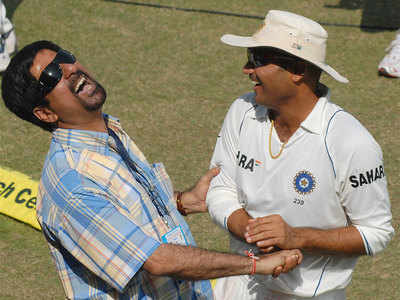
Krishnamachari Srikkanth and Virender Sehwag. (TOI Photo)
Key Highlights
- Srikkanth's living-on-the-edge style of batting made him a darling of the crowds in the 1980s, when orthodox cricket was the order of the day.
- Srikkanth's six international centuries don't quite do justice to his talent.
- But the BCCI did recognize it by giving Srikkanth the Lifetime Achievement Award this year.
Krishnamachari Srikkanth might not have racked up the biggest numbers in international cricket, but even to this day, almost three decades after his retirement, he stays one of the eternal crowd favourites.
It was his living-on-the-edge style of batting that made him such a darling of the crowds in the 1980s, when orthodox cricket was the order of the day. His six international centuries (two in Tests and four in ODIs) don't quite do justice to his talent, but the BCCI did recognize it by giving him the Lifetime Achievement Award this year.
During a chat with TOI, the 60-year-old Chika spoke about his experiences as a player, selector and a lot more that made him the legend that he is today.
Excerpts:
You were the one who called me and let me know that I have won it. It's a humbling moment for me, I want to thank BCCI president Sourav Ganguly and secretary Jay Shah for giving me this award.
If you have to choose one high point in your career, what will that be?
The greatest moment for me will always be winning the 1983 World Cup as a player. Even today I can't believe I was the highest scorer in the final (38 on a greentop against West Indies). That victory was a game changer not only for Indian cricket, but for Indians as a whole across the globe. They could go anywhere and say proudly 'we are the world champions'.
Your approach to cricket was so different in the 80s...
Yes, when I think of it now, I feel that I was far ahead of my times in my approach to the game. My game would have been ideally suited to modern-day T20 cricket...Be it in Test matches or ODIs, I look at myself as a kind of trend-setter and it had a lot to do with my approach to life which was unorthodox. Even to this day I haven't changed much...
How do you see your opening partnership with the great Sunil Gavaskar?
Gavaskar and I complemented each other and it was a great combination. It's been more than 30 years and when people still talk about the Gavaskar-Srikkanth partnership, you know what it meant for the fans.
If you have to choose your best Test and ODI innings, which would that be?
My 116 in the Test match against Australia in Sydney in 1985 off 117 balls is definitely my favourite in the longer version. What made it special was the fact that 85 of those runs came off straight drives. My century at Kolkata against Pakistan (in 1987) was my favourite in ODIs. However, we lost that game with Salim Malik running away with it with a brilliant innings. My 80-odd against West Indies, which had the then fastest bowler Pattrick Patterson, in the 1991 tri-series was also a memorable one.
How did you manage to tackle pace of this quality with such panache?
We grew up playing on the matting wickets in Chennai and it was a blessing in disguise for me. Playing on such pitches where the ball used to come at a pace and with a steep bounce, allowed me to become a better player of short deliveries. I could play with or without helmet, the grill of the helmet was always a distracting factor for me...Basically I was fearless and that made me such a good forward short-leg fielder as well.
Who were the most difficult bowlers you faced?
Well, I have to name three guys - Wasim Akram, Malcolm Marshall and Richard Hadlee. The combination of skill and pace made them really difficult customers. But one bowler who often made it very awkward for me was Australia's Rodney Hogg, who had a terrifying pace.
Do you have regrets?
Now when I look back, I feel I got out too many times in the 20s and 30s after I got set. At that time, the machismo of playing with fire was tempting, but now I feel I could have built a bit more on those innumerable good starts that I got. But then, people don't remember me for the records, they do for the way I played the game.
How do you remember your phase as the Indian captain?
It was a very short phase, the players' association was coming up and I was, kind of, stuck as a captain. We came back with a drawn series from Pakistan when Imran Khan was desperate to beat us, but I lost my captaincy after that. I think I had to pay as a price for sticking up my neck out as a captain during that difficult phase. Yes, it wasn't the most productive series, runs-wise, for me, but the fact that I got dropped after that was more of politics than cricket.
Almost 10 years after your retirement Virender Sehwag came and often his game was often compared to yours. How do you explain this comparison?
Well, at times I feel if only I had the discipline of Sehwag, I, too, would have got those runs that he got. Sehwag was a brilliant player but even when he was playing those dazzling shots, he knew how to control his innings and not throw it away.
Finally, India won their second ODI World Cup when you were the chairman of selectors. How do you remember that?
When I took over as the chairman in 2008, my dream was to build a team that could win the 2011 World Cup. God has been kind and we had a captain like MS Dhoni, and the win was still one of the best moments of my cricketing journey. Let me also remind you, we were the ones who gave Virat Kohli the chance to flourish and look where he is today! So it has all been very satisfying.
It was his living-on-the-edge style of batting that made him such a darling of the crowds in the 1980s, when orthodox cricket was the order of the day. His six international centuries (two in Tests and four in ODIs) don't quite do justice to his talent, but the BCCI did recognize it by giving him the Lifetime Achievement Award this year.
During a chat with TOI, the 60-year-old Chika spoke about his experiences as a player, selector and a lot more that made him the legend that he is today.
Excerpts:
How was it like when you heard the news of getting the award on Friday evening?
You were the one who called me and let me know that I have won it. It's a humbling moment for me, I want to thank BCCI president Sourav Ganguly and secretary Jay Shah for giving me this award.
If you have to choose one high point in your career, what will that be?
The greatest moment for me will always be winning the 1983 World Cup as a player. Even today I can't believe I was the highest scorer in the final (38 on a greentop against West Indies). That victory was a game changer not only for Indian cricket, but for Indians as a whole across the globe. They could go anywhere and say proudly 'we are the world champions'.
Your approach to cricket was so different in the 80s...
Yes, when I think of it now, I feel that I was far ahead of my times in my approach to the game. My game would have been ideally suited to modern-day T20 cricket...Be it in Test matches or ODIs, I look at myself as a kind of trend-setter and it had a lot to do with my approach to life which was unorthodox. Even to this day I haven't changed much...
How do you see your opening partnership with the great Sunil Gavaskar?
Gavaskar and I complemented each other and it was a great combination. It's been more than 30 years and when people still talk about the Gavaskar-Srikkanth partnership, you know what it meant for the fans.
If you have to choose your best Test and ODI innings, which would that be?
My 116 in the Test match against Australia in Sydney in 1985 off 117 balls is definitely my favourite in the longer version. What made it special was the fact that 85 of those runs came off straight drives. My century at Kolkata against Pakistan (in 1987) was my favourite in ODIs. However, we lost that game with Salim Malik running away with it with a brilliant innings. My 80-odd against West Indies, which had the then fastest bowler Pattrick Patterson, in the 1991 tri-series was also a memorable one.
How did you manage to tackle pace of this quality with such panache?
We grew up playing on the matting wickets in Chennai and it was a blessing in disguise for me. Playing on such pitches where the ball used to come at a pace and with a steep bounce, allowed me to become a better player of short deliveries. I could play with or without helmet, the grill of the helmet was always a distracting factor for me...Basically I was fearless and that made me such a good forward short-leg fielder as well.
Who were the most difficult bowlers you faced?
Well, I have to name three guys - Wasim Akram, Malcolm Marshall and Richard Hadlee. The combination of skill and pace made them really difficult customers. But one bowler who often made it very awkward for me was Australia's Rodney Hogg, who had a terrifying pace.
Do you have regrets?
Now when I look back, I feel I got out too many times in the 20s and 30s after I got set. At that time, the machismo of playing with fire was tempting, but now I feel I could have built a bit more on those innumerable good starts that I got. But then, people don't remember me for the records, they do for the way I played the game.
How do you remember your phase as the Indian captain?
It was a very short phase, the players' association was coming up and I was, kind of, stuck as a captain. We came back with a drawn series from Pakistan when Imran Khan was desperate to beat us, but I lost my captaincy after that. I think I had to pay as a price for sticking up my neck out as a captain during that difficult phase. Yes, it wasn't the most productive series, runs-wise, for me, but the fact that I got dropped after that was more of politics than cricket.
Almost 10 years after your retirement Virender Sehwag came and often his game was often compared to yours. How do you explain this comparison?
Well, at times I feel if only I had the discipline of Sehwag, I, too, would have got those runs that he got. Sehwag was a brilliant player but even when he was playing those dazzling shots, he knew how to control his innings and not throw it away.
Finally, India won their second ODI World Cup when you were the chairman of selectors. How do you remember that?
When I took over as the chairman in 2008, my dream was to build a team that could win the 2011 World Cup. God has been kind and we had a captain like MS Dhoni, and the win was still one of the best moments of my cricketing journey. Let me also remind you, we were the ones who gave Virat Kohli the chance to flourish and look where he is today! So it has all been very satisfying.
End of Article
FOLLOW US ON SOCIAL MEDIA
